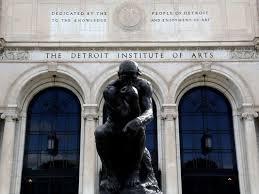The Thinker, August Rodin 1902, in front of the Detroit Art Museum
Detroit has been at the heart of America since its founding in 1701. Over the years, Detroit has always been the center of America. Located geographically to connect America with Canada via the natural water systems, it is the way in to America's heart. In the 1950s the formation of the regional highway system turned it into a travel hub for ordinary citizens with wanderlust, skilled workers building America's infrastructure and manufacturing base, and essential to commercial trucking routes. America and Americans are diverse, and our freedom allows us to celebrate our diversity, and our love of that freedom allows us to come together as a nation. The treasures of this most populated city in Michigan are so vast that one moniker has never been sufficient, and over the years it has been called: Motor City, Motown, City of Champions, The D, Hockeytown, Rock City, The 313 (its telephone area code), and Arsenal of Democracy after its industrial base went to work supporting the Allied powers during World War II.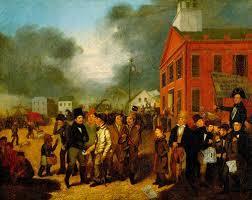
First State Election in Detroit, Michigan, 1837 by Thomas Mickell Burnham, 1837
A jewel in the center of Detroit is the Detroit Art Museum. And in it is a collection of some of the world's greatest works of fine art. As Americans and international travelers pass through this cultural hub they can see Vincent Van Gogh's Self Portrait, August Rodin's The Thinker, Peter Breughel's The Wedding Dance, Thomas Mickell Burhnam's First State Election in Detroit, Michigan, 1837, and Degas' Little Dancer of Fourteen Years. The grand central hall is surrounded by 9 murals, together titled Detroit Industry, by Diego Rivera that at first seems to dwarf the viewer by its sheer size, but then shows how heroic the American worker is. These murals, like so many others across America, remind us of the Great Depression and the WPA, which tapped into America's tenacity, diligence, and burning never-say-die spirit has that has kept us going, leading the world in freedom, liberty and the right to pursue happiness.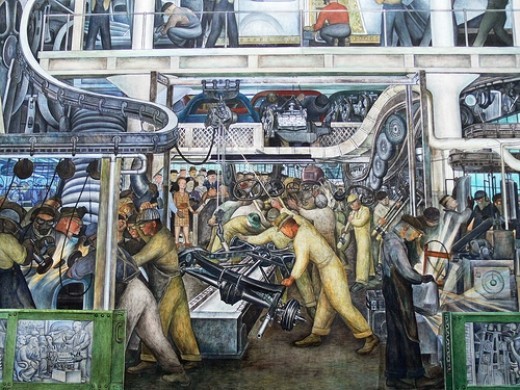
Detroit Industry, Diego Rivera, created April 1932-March 1933 , one of a series of 9 murals created by this artist to show the industry of the citizens of Detroit
Somewhere along the way, something shifted. The many reasons for this shift have been written about in countless volumes, while its the results are being felt anew every day. Instead of celebrating culture and fine art, the place of the individual, the right to freedom of expression, and the permission to pursue one's happiness, we slowly began to put a price on everything, and stopped recognizing the value of anything unable to be assigned a monetary value. The auto industry collapsed, the stock and real estate markets fell as dominoes in 2008, the middle class diminished, schools were closed, libraries boarded up, arts institutions fell, and poverty increased, all under the looming shadow of the culture of greed. And if most people were asked about a famous painting, all they knew was how many millions it was worth at famous auction houses.
Man's Shirt, Crow Tribe, 1860, one of the many Native American works displayed at the Detroit Art Museum
And then Detroit itself went bankrupt. Debt collectors swooped in looking for booty, as pirates in a raid, and when they circled as vultures above the Detroit Art Museum they salivated at the market value of individual works (at least 65 were valued at $1 million or more). The proceedings began, and landed in the lap of Federal Judge Steven W. Rhodes. Rhodes, living up to the spirit of those pictured in Diego Rivera's mural, stepped up. He refused to grant the vultures purchase, and even balked at the few Detroit Art Museum board members who, calculators in hand, were willing to sell off the treasures as old bubble gum trading cards, that with age had gained value, are at garage sales. 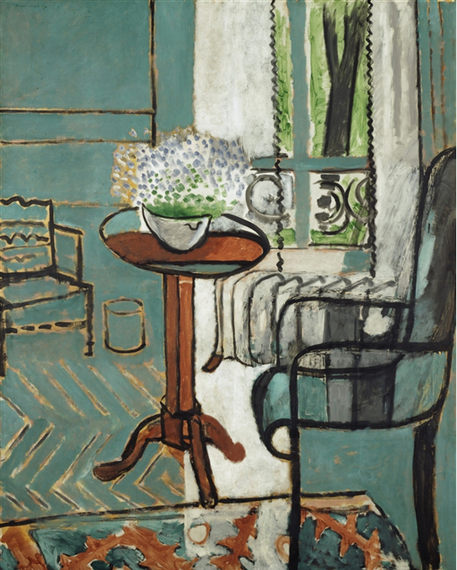
The Window, Henri Matisse, 1922
Judge Rhodes had a different idea. He took stock of more than the monetary value of items, and looked at Detroit as the gem it is, not just a very large going-out-of-business, everything-must-go, sale. In an unprecedented move, he challenged the very integrity of humanity that lives within each of us, and put a value on two things: Detroit as an integral part of America's heartland, and the value of culture. With these glasses on he considered the task at hand, and brokered an arrangement with philanthropic organizations, and large individual donors, to contribute roughly $800 million to save the Detroit Art Museum, and by doing so, he saved Detroit. Details of this have been headlines in most major papers, as the residents of Detroit, its citizens and pensioners, breathe a sigh of relief.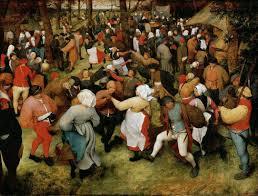
The Wedding Dance, Peter Breughel the Elder, 1566
What does this have to do with the Coming Golden Age of Fine Art? Everything! Detroit is America's heart, and in it is part of our cultural soul - fine art. His actions are part of a new trend that is showing up in many places. Behind the din of constant electronic gadgetry, viral technological growth, and the silent screams as our world is being polarized, is a new need. Having had the soul of our humanity reduced to a "market-value if sold" mentality, people are starting to wake up to the empty, hollow feeling that comes from pointlessness, and demanding more--Relevance! 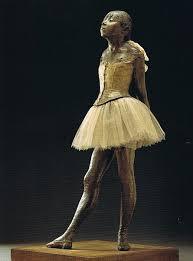
Little Dancer of Fourteen Years, Edgar Degas, 1881
Thus, just as always follows a prolonged period of suffering, it will be fine art that fills that need. When we see the visions in these works we realize that each of us has relevance, and our every experience in life is part of that relevance. The individual is not only relevant, but humanity is essential. And as we must each find our own identity, and celebrate whatever that is in this land of freedom and liberty for ALL, we also find that together we are the human race and that, above all else, is very important.
So thank you Judge Rhodes, and Detroit, for this lesson. The Coming Golden Age of Fine Art will continue to grow from the seeds you have just planted in history.
Next in The Coming Golden Age of Fine Art Series: Young Choreographers of Note: Joshua Beamish.
